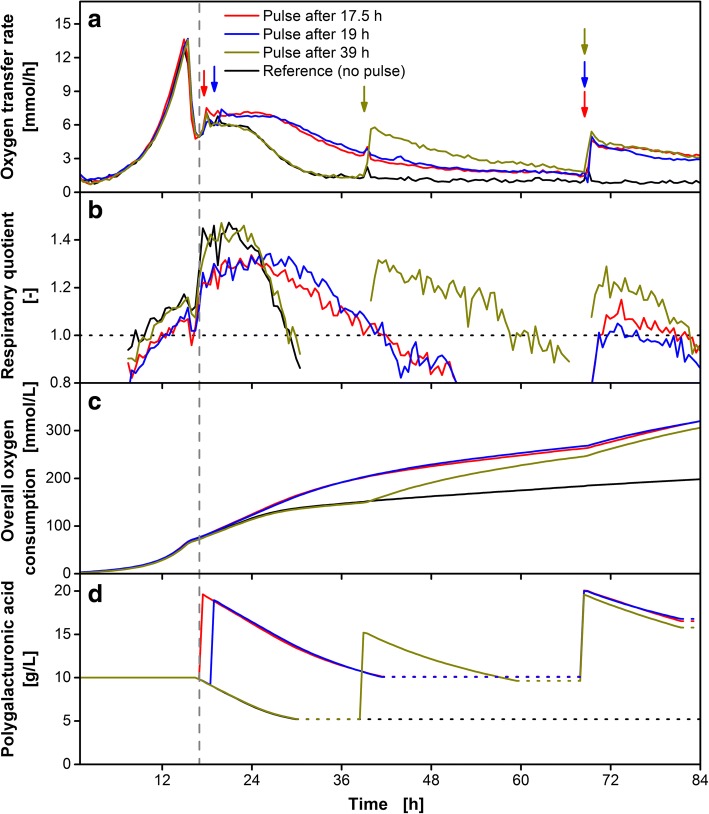Fig. 8.
Influence of polygalacturonic acid pulses on the cultivation of U. maydis AB33P5ΔR/AtPgaX. The strain was grown on glucose (6.5 g/L) and polygalacturonic acid (10 g/L) as carbon sources. Pulses of polygalacturonic acid were added at indicated time points (arrows). At 68.5 h, all cultures except the reference received a second substrate pulse. The values for the oxygen transfer rate (OTR), the overall oxygen consumption (OT) and the predicted residual polygalacturonic acid concentration (PolyGalAcalc) refer to the initial filling volume. The vertical dashed line represents the beginning of polygalacturonic acid consumption. a Mean value of biological duplicates of the OTR. b Mean value of biological duplicates of RQ. The dotted horizontal line represents RQ = 1. For clarity, the RQ is only shown for OTR > 2 mmol/L/h. c Mean value of duplicates of the OT. d PolyGalAcalc according to Eq. (6). The RQ drops below 1 during consumption of polygalacturonic acid, indicating depletion of accessible substrate. Thus, the line for PolyGalAcalc in Fig. 8d is dotted during that time. The mean values of biological duplicates are shown for better clarity. Culture conditions: modified Verduyn medium, 0.2 M MOPS, initial pH 6.5, 250 mL flask, initial filling volume 20 mL, shaking frequency 300 rpm, shaking diameter 50 mm, initial OD600 = 0.2, temperature 30 °C. The mass of polygalacturonic acid in one pulse equals the initial mass supplemented in the medium. Pulses of 5 mL polygalacturonic acid solution (40 g/L) were added

